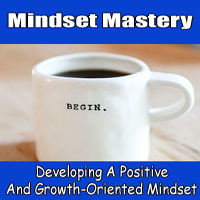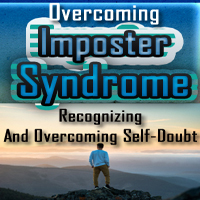


Reconnect, Reflect, And Rejuvenate

In the fast-paced and demanding world we live in, taking time for a personal retreat may seem like a luxury or a rare indulgence. However, personal retreats are more than just an escape from our daily routines; they are a deliberate and essential practice for nurturing the mind, body, and spirit. A personal retreat offers the opportunity to disconnect from external demands, find inner clarity, and rejuvenate oneself.
A personal retreat can take various forms, from a short day excursion to a more extended getaway, depending on your schedule and preferences. The essence of a personal retreat lies in its intention: to step away from the noise and distractions of everyday life and create a dedicated space for self-discovery, reflection, and self-care.
One of the primary purposes of a personal retreat is to reconnect with oneself. In our busy lives, we often become disconnected from our inner selves. The constant demands of work, family, and technology can pull us in various directions, leaving little room for self-awareness. A personal retreat allows you to reclaim this connection by providing a tranquil space for introspection.
During a personal retreat, you can set aside time for activities that nourish your mind and spirit. This may include meditation, journaling, yoga, or simply sitting in silence to listen to your thoughts and feelings. The goal is to gain insight into your inner world, understand your aspirations and fears, and explore your innermost thoughts and emotions.
A personal retreat also serves as an opportunity for reflection. It's a time to review your life's journey, evaluate your past experiences, and set intentions for the future. Reflecting on your accomplishments and challenges can lead to personal growth and offer valuable insights for decision-making in various aspects of your life.
Furthermore, personal retreats are a means of self-rejuvenation. Stepping away from the routine and demands of daily life allows your body and mind to rest and recharge. It can be a time to indulge in self-care, enjoy peaceful nature walks, read inspiring books, or simply relax. This restoration of your physical and emotional well-being can help you return to your daily life with a renewed sense of vitality and purpose.
Whether you choose a solitary retreat in a serene natural setting or a stay at a retreat center, it's crucial to disconnect from technology and external distractions. Embrace the opportunity to be present in the moment and fully engage in the practices and activities that nurture your mind and spirit.
Personal retreats are not a mere luxury; they are a valuable investment in your well-being. They provide a dedicated space for self-discovery, reflection, and rejuvenation. By setting aside time for a personal retreat, you can reconnect with your inner self, gain clarity on your life's journey, and return to your daily life with a sense of renewal and purpose.
Your Path To A Healthier And Happier Life
 Mental Health: Wellness goals focused on mental well-being could involve stress reduction, practicing mindfulness, or seeking therapy when needed. These goals can help you build emotional resilience and maintain a positive outlook on life.
Mental Health: Wellness goals focused on mental well-being could involve stress reduction, practicing mindfulness, or seeking therapy when needed. These goals can help you build emotional resilience and maintain a positive outlook on life.
Emotional Balance: Emotional wellness goals may include self-compassion, self-expression, and nurturing positive relationships. Striving for emotional balance allows you to navigate life's ups and downs with greater ease.
Social Connections: Prioritizing your social well-being involves spending quality time with loved ones, building and maintaining healthy relationships, and participating in community activities. Social connections are an integral part of overall wellness.
The Process Of Prioritization
Reflect On Values: Start by reflecting on your values and what truly matters to you. Understanding your personal priorities will help you align your wellness goals with your core beliefs and desires.
Identify Key Areas: Determine the key areas of your life that require attention. It could be related to health, work-life balance, relationships, or personal growth. Focus on areas where you can make meaningful changes.
Set SMART Goals: Your wellness goals should be Specific, Measurable, Achievable, Relevant, and Time-bound (SMART). This makes them more tangible and attainable.
 Optimism And Resilience: A positive mindset allows you to approach relationships with optimism and resilience. Instead of dwelling on past conflicts or failures, you focus on the potential for growth and understanding. This resilience helps you bounce back from disagreements and setbacks, making your relationships more robust.
Optimism And Resilience: A positive mindset allows you to approach relationships with optimism and resilience. Instead of dwelling on past conflicts or failures, you focus on the potential for growth and understanding. This resilience helps you bounce back from disagreements and setbacks, making your relationships more robust.
Effective Communication: Positive-minded individuals tend to be better communicators. They are more inclined to listen actively, express themselves clearly, and avoid misunderstandings. Effective communication is crucial for building and maintaining healthy relationships.
Conflict Resolution: Conflict is a natural part of any relationship, but a positive mindset can help resolve conflicts in a more constructive way. Instead of resorting to blame or defensiveness, you are more likely to seek compromise and mutually beneficial solutions.
Empathy And Compassion: A positive mindset encourages empathy and compassion. You are more capable of putting yourself in another person's shoes, understanding their perspective, and responding with kindness and compassion. This fosters trust and deepens your connections.
Healthy Boundaries: Cultivating a positive mindset also involves setting and respecting healthy boundaries. By doing so, you ensure that your needs are met and that you maintain a sense of balance in your relationships. Healthy boundaries are essential for long-term relationship satisfaction.
Appreciation And Gratitude: A positive mindset emphasizes appreciation and gratitude for the people in your life.
Breaking Free From The Chains Of Insecurity
 Understanding Crippling Self-Doubt
Understanding Crippling Self-Doubt
Crippling self-doubt goes beyond the occasional self-questioning or moments of uncertainty that most people experience. It is a persistent and pervasive sense of inadequacy that can lead to a fear of failure, constant anxiety, and a belief that one is inherently unworthy or incapable of success. Those afflicted with crippling self-doubt often struggle to internalize their accomplishments and talents, attributing their successes to external factors or mere luck.
Causes Of Crippling Self-Doubt
Crippling self-doubt can have various origins, and it may be triggered or exacerbated by a range of factors:
Past Experiences: Traumatic experiences or past failures can leave lasting scars and foster self-doubt.
Comparison: Constantly comparing oneself to others and feeling like you fall short can lead to crippling self-doubt.
Perfectionism: Striving for unattainable perfection and fearing any hint of imperfection can fuel self-doubt.
High Expectations: External pressure or high expectations from others can amplify self-doubt.
Impostor Syndrome: The feeling of being a fraud, despite success, can contribute to crippling self-doubt.






 Strategies For Building Effective Work Habits:
Strategies For Building Effective Work Habits:
Set Clear And Attainable Goals: Effective work habits start with setting clear, specific, and achievable goals. When you know what you want to accomplish, you are better equipped to plan your work and stay on track.
Prioritize Tasks: Prioritization is the cornerstone of productivity. Use the Eisenhower Matrix to categorize tasks as urgent and important, important but not urgent, urgent but not important, or neither. Focus your energy on tasks that fall into the first two categories.
Create A Work Schedule: Develop a daily or weekly work schedule that allocates dedicated time for specific tasks. Having a structured routine can minimize the temptation to procrastinate.
Break Tasks Into Smaller Steps: Large or daunting tasks are more likely to trigger procrastination. Break them down into smaller, more manageable steps. This approach makes the overall task seem less overwhelming.
Use Time Management Techniques: Effective time management techniques, such as the Pomodoro Technique or time blocking, can help you maintain focus and increase your productivity.
Minimize Distractions: Identify common sources of distractions in your workspace and take steps to minimize them. Turn off unnecessary notifications, create a dedicated work environment, and use noise-canceling headphones if needed.
Practice Consistency: Consistency is the hallmark of effective work habits. Stick to your schedule, meet your daily goals, and avoid giving in to procrastination triggers.
Cultivating A Positive Perspective For A Fulfilling Life
 Growth Mindset: On the other hand, those with a growth mindset embrace challenges as opportunities for growth and learning. They believe in the capacity to improve through effort and experience. Setbacks are viewed as stepping stones toward success.
Growth Mindset: On the other hand, those with a growth mindset embrace challenges as opportunities for growth and learning. They believe in the capacity to improve through effort and experience. Setbacks are viewed as stepping stones toward success.
Mindset And Well-Being
A positive mindset, particularly a growth mindset, contributes significantly to well-being in several ways:
Resilience: A growth mindset fosters resilience, helping individuals bounce back from setbacks and adversity. They view challenges as opportunities for personal growth, making them more adaptable and capable of overcoming difficulties.
Optimism: Optimistic individuals are more likely to experience higher levels of well-being. They tend to focus on positive aspects of life, which can improve mood and overall life satisfaction.